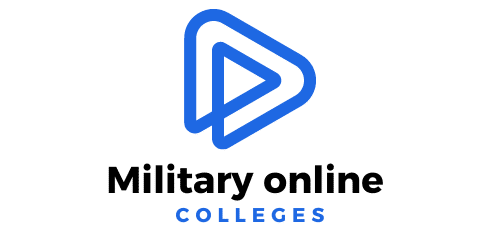How to Optimize the Drivetrain Alignment in a Lotus Evora for Maximized Power Transfer?

In the world of automotive enthusiasts, there’s a constant pursuit for perfection. The thrill of extracting the maximum potential from your vehicle is a passion shared by many. This article looks to shine a light on one area that is often overlooked but can have a significant impact on the power delivery of your vehicle: drivetrain alignment. In particular, we’re going to focus on the Lotus Evora, a sports car that has carved a niche for itself in the category of high-performance vehicles.
The Importance of Drivetrain Alignment
Drivetrain alignment plays a crucial role in the overall performance of your vehicle. It refers to how the components of the drivetrain – the engine, transmission, drive shafts, and differentials – are aligned in relation to each other and the car’s chassis. Proper alignment ensures the efficient transfer of power from the engine to the wheels, minimizing energy loss.
A découvrir également : Discover essential uk concert info for ultimate gig guide
For a sports car like the Lotus Evora, this alignment becomes even more critical. The Evora belongs to a class of high-performance vehicles where every bit of power and torque is crucial for the overall driving experience. Hence, optimizing the alignment of the drivetrain can result in noticeable improvements in performance and fuel efficiency.
Aligning the Drivetrain: A Step-by-step Guide
Let’s delve into the process of optimizing the drivetrain alignment. It’s important to note that while the process may seem complex, it is entirely permitted by vehicle manufacturers and does not require any replacement of the original components.
A lire aussi : How to Retrofit a Wireless Charging Pad in a Jaguar XE for Modern Convenience?
To begin with, ensure the vehicle is on a level surface and the parking brake is applied. Raise the front of the car using a car jack and then support it with jack stands for safety. Do the same for the rear end.
Next, locate the drivetrain components. In the Lotus Evora, the engine is mid-mounted, with the transmission located behind it. The driveshafts connect the transmission to the rear wheels. Look for any signs of physical damage or wear. Remember, proper alignment is only possible when all the components are in good working condition.
Using a spirit level, check the alignment between the engine and the transmission. Adjust the engine mounts until the engine sits level in relation to the ground. Repeat the process for the transmission.
Lastly, check the alignment of the driveshafts. They should be parallel to each other and the ground. If adjustments are necessary, alter the differential mounting points.
Potential Challenges to Optimal Alignment
While the process appears straightforward, there can be a few challenges that you might face. For instance, the space for adjustment in the engine and transmission mounts might be limited. It’s common in sports car designs where the drivetrain is tightly packed for better weight distribution and control.
Many sports cars, including the Lotus Evora, use low-profile tires and sporty suspensions that can make access to the drivetrain components difficult. Moreover, the car’s trim and bodywork may obstruct some of the mounting points and require careful maneuvering.
Performance Benefits and Safety Considerations
Once you’ve aligned the drivetrain, you’ll notice a difference in the car’s performance. The vehicle will feel more responsive, with power being transferred more efficiently to the wheels. The car will also achieve better fuel economy due to the reduction in friction and energy loss.
As for safety considerations, remember to ensure all mounts and connections are tightened to the manufacturer’s specifications after making adjustments. This will prevent any unforeseen issues while driving.
In conclusion, optimizing the drivetrain alignment in your Lotus Evora, or any sports car for that matter, can significantly enhance the car’s performance and driving experience. Keep in mind the safety aspects involved and the need for regular checks and maintenance.
Remember, a well-aligned drivetrain is a hallmark of a well-maintained, high-performance vehicle, and is as important as any other aspect of your car’s maintenance regime.
The Tuner Category and Modifications for Drivetrain Alignment
The tuner category of cars, like the Lotus Evora, are high-performance vehicles that are often subjected to modifications for improved performance. These changes may include enhanced exhaust systems, engine tuning, and alterations to the drivetrain alignment to maximize power transfer.
When tuning the drivetrain alignment, it’s crucial to understand that the components are connected to each other and to the car’s chassis by a series of mounts that hold them in place. Drivetrain alignment optimization involves adjusting these mounting points to ensure that the components are in their optimal position.
Various factors come into play when dealing with drivetrain alignment. These include the condition and amount of metal used in components, whether any parts are modified or replaced, and the condition of the mounting points. The Lotus Evora, with its mid-mounted engine and rear-wheel drive, has a drivetrain layout that is complex yet offers the potential for precise alignment and improved performance.
One crucial aspect of drivetrain alignment is the replacement of standard bushings with performance-oriented ones. Bushings are the cushions made of rubber or solid metal placed between the mounts and the chassis. Upgraded bushings will help maintain optimal alignment and reduce undesired movements in the drivetrain.
Safety Level and Driving Experience: The Outcome of Optimal Drivetrain Alignment
Ensuring the highest safety level while optimizing drivetrain alignment is paramount. The first thing to remember is always to tighten all mounts and connections to the manufacturer’s specifications after making adjustments. This will help prevent any unforeseen issues while on the move.
The driving experience is significantly improved with a well-aligned drivetrain. The vehicle’s response to steering wheel input is quicker, and power gets transferred more efficiently to the wheels. This can give drivers an edge in time trials or competitive driving scenarios.
One word to remember is maintenance. All the benefits of drivetrain alignment can only be sustained with regular checks and maintenance. This involves not only looking out for signs of wear but also ensuring that the alignment remains optimal over the long term.
In conclusion, optimizing drivetrain alignment in your Lotus Evora or any vehicle in the tuner category can dramatically enhance your driving experience and the car’s performance. Always remember that the key elements in this process include knowing the amount of metal used in components, checking the condition of mounting points, and using replacement bushings to meet level standards. Safety should never be compromised, and regular maintenance should be an integral part of your car care regime. A well-aligned drivetrain is, indeed, a hallmark of a well-maintained, high-performance vehicle.
